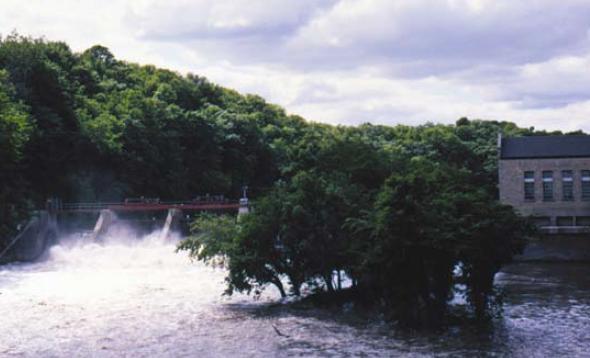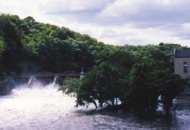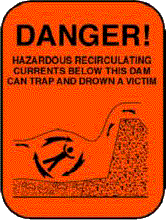
Dams were built for many reasons, but the more common ones include flood control, hydroelectric power generation, municipal water supplies, recreation and navigation. Some dams serve a useful purpose, but many dams are obsolete and have outlived their purpose. Some are in serious disrepair.
There are more than 200 dams on Iowa's rivers and streams.

Dams were built for many reasons, but the more common ones include flood control, hydroelectric power generation, municipal water supplies, recreation and navigation. Some dams serve a useful purpose, but many dams are obsolete and have outlived their purpose. Some are in serious disrepair.
There are more than 200 dams on Iowa's rivers and streams.


When water flows over the top of a dam and hits the water below, it creates a backwash or boil that re-circulates surface water back against the dam. Anything that floats gets trapped, pushed down to the bottom, pulled up and back to start the process over again. A life vest will not help you and even the strongest swimmers will drown in these currents. Typical low head dams also have concrete side walls that prevent escape at the sides of the dam.

